IBM's ThinkPad T42 LCD: A Blast from the Past
by Jarred Walton on December 7, 2010 7:30 PM ESTIBM's ThinkPad T42 LCD: A Blast from the Past
As a vocal proponent of improving laptop LCD quality—and LCD quality for desktops as well—the past few years have been painful. True, laptop LCDs have never been at the level of their desktop counterparts, but once upon a time there were at least a few laptops that didn't use TN panels. One of those is the vaunted IBM ThinkPad T42, launched way back in 2004. Besides coming before virtually everything migrated to widescreen displays, the T42 is one of the few laptops to use an IPS panel. As luck would have it, I recently had a chance to use a T42, and I took the opportunity to run it through our standard set of LCD tests. Mostly I was curious to see the results, but I figured some of our readers would enjoy getting our impressions of this archeological find as well.
Before we get to the display, let's make a few other points about this venerable old soldier. First, it's absolutely astonishing how well a six-year-old laptop continues to hold together—a true testament to the ThinkPad engineering team. The LCD hinges are still fully intact and work well, the chassis still feels solid, and the particular T42 I had access to is even running Windows 7…and running it rather well, actually! Of course, this was no entry-level laptop back when it was purchased. It has 2GB of DDR-266 RAM, a fast 1.8GHz Pentium M 745 (Dothan) processor, and it even includes a powerful (at the time) Mobility Radeon 9600 with 64MB of RAM. You might laugh at some of those specs, but this system will still run circles around Atom and it checked in at roughly $2500 at the time of purchase. Then again, six years of use for $2500 is pretty darn impressive.
About the only area where the T42 truly struggles compared to modern laptops is in handling HD video; sadly, the Radeon 9600 has no video decode acceleration for H.264 content, so even standard YouTube content can feel a bit choppy, and forget about HD videos. Going fullscreen on SD YouTube (and other Flash videos) definitely struggles, but not to the point where I'd say it's unwatchable—but again, forget about the HD videos. Another component that fails to impress after all these years is the old 80GB 5400RPM Fujitsu hard drive, and with its IDE interface you won't be upgrading to one of the latest and greatest SSDs. Outside of HD multimedia, however, the T42/Pentium M platforms of old still run well enough for most tasks. General office and Internet use isn't a problem, and Windows 7 32-bit gets along quite well with the 2GB RAM. Where most consumer laptops from 2004 have long since retired to the scrap heap with broken hinges, casing, failed motherboards, etc. the ThinkPad keeps plugging along.
But then, you didn't come here for a review of the T42 six years after launch. My main interest in this laptop is the LCD; all it takes is a few seconds looking at the display from acute vertical angles and it becomes immediately apparent that this is not your typical TN panel. As a point of reference for just how easy it is to tell the difference, look at the shots below showing the T42 with the Dell E6410. The E6410 LCD is substantially brighter (200nit laptops simply didn't exist in 2004, let alone 300nit options), but the above and below angles are all but useless.
The sheer brightness of the E6410 can be misleading, and clearly a dim panel from 2004 isn't going to win every comparison. However, laptops are devices where you frequently view content from above or below (i.e. sitting in a cramped airplane seat), and forcing everyone to use TN panels with lousy vertical viewing angles definitely isn't in our best interest. The technology was in use over six years ago, and there's nothing to stop LCD manufacturers from offering better panels…other than the almighty bottom line.
Before we get to the charts, the other item worth discussing is the resolution and aspect ratio. I don't have a major problem with widescreen displays, but there's a limit to how far we should go, and 16:9 is either at the limit or beyond it depending on your perspective. Widescreen is nice for movies (as long as they're also widescreen), but for most other tasks regular displays work fine, and 768p in particular is a very bad resolution to standardize on. With a WUXGA or even 1080p display, there's at least enough room to view two document/web pages side by side, but drop to 1366x768 and all you get is a short display that's a bit wider than your average website. The T42 I'm looking at has a 15" SXGA+ (1400x1050) display, which works out very nicely on this size chassis. Comparing it to a modern Dell Latitude E6410, the Latitude is about .4" wider but the T42 is a good 1" to 1.2" deeper/taller. The T42 dot pitch is also slightly finer (125dpi vs. 120dpi on the 14.1" WXGA+).
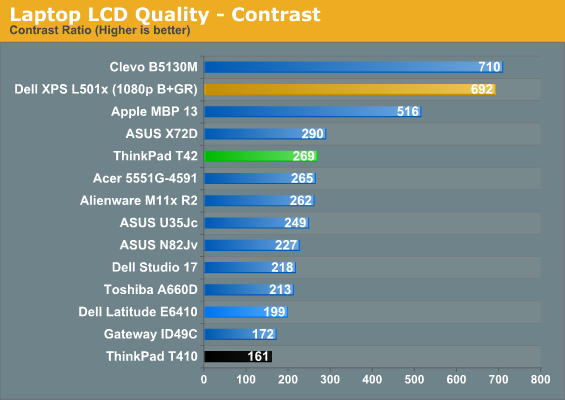
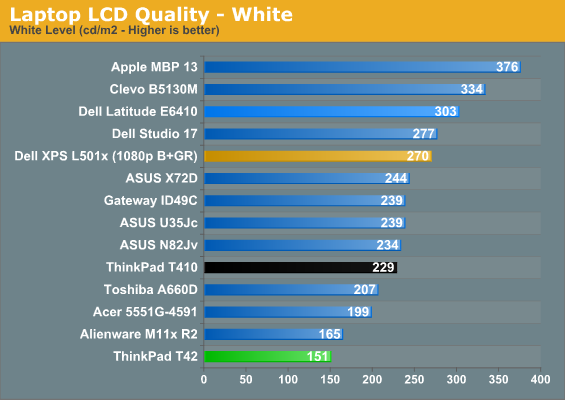
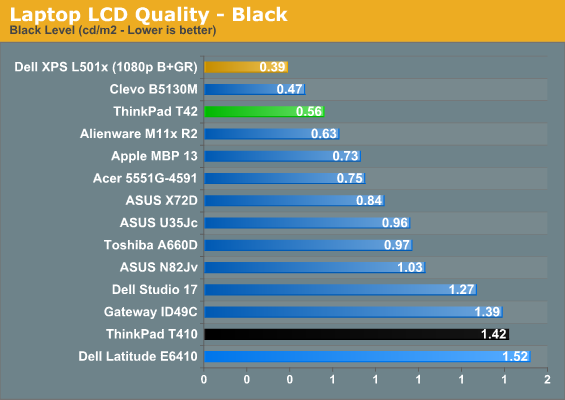
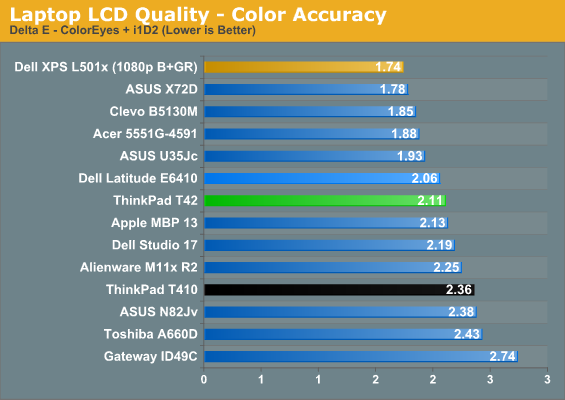

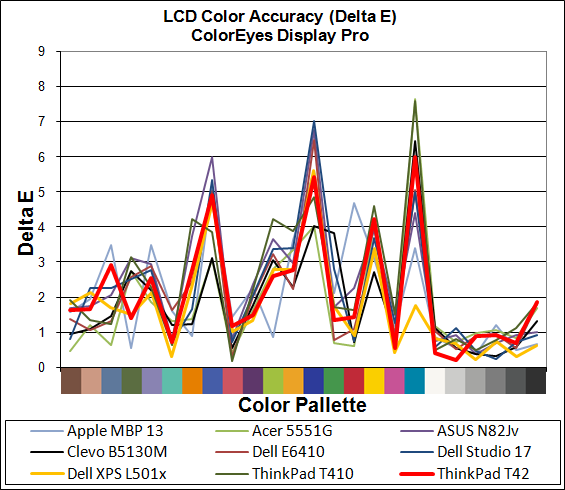
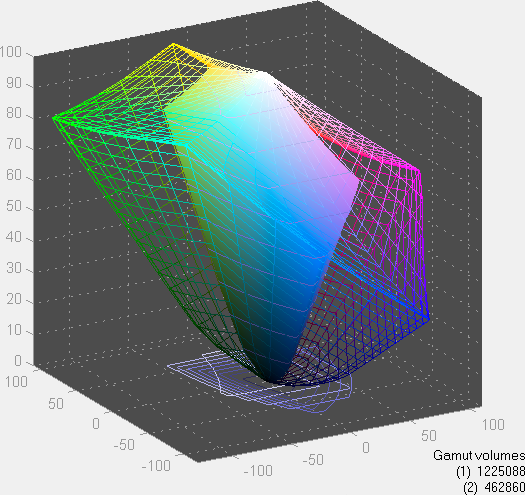
So after all the good things we've said, you might have expected this to be a clear cut decision in favor of the ThinkPad Flexview displays. While it definitely wins the vertical viewing angle comparison, in other areas it's still a product of its time. Color accuracy is good if not great, but the contrast ratio is only moderately higher than most modern LCDs at 270:1. Granted, we're looking at a matte LCD (another bonus point!), so if this were a modern glossy equivalent you'd be looking at around 325:1, but then there are plenty of other things that have changed.
One big change is the backlighting, which is why a six-year-old LCD manages a color gamut of just 39% and 150nits brightness, both at the bottom of our charts. Besides providing for potentially improved color gamut—obviously, you can still have a low color gamut as the T410, E6410, and other laptops show—modern LED backlighting is typically far brighter than any old CCFL backlight. Even at maximum brightness, there are plenty of times where the T42 LCD still feels dim.
Ultimately, what I'm most interested in showing is how viewing angles really do matter on laptops and the difference an IPS panel can make. Apple is one company that actually understands this, as they used an IPS panel in the iPad. That's something many of the competing slates are completely overlooking, with the result being a tablet that you can't look at from certain angles. And with a modern IPS display, the iPad manages a stunning near-1000:1 contrast ratio. For obvious reasons (touch screen), the iPad has a glossy, scratch-resistant coating, but even with the 20% "matte contrast tax" you can easily make matte IPS displays that achieve 750:1 or higher contrast. I would love to see some laptop manufacturers push the LCD makers to create more such panels. I don't care if they cost $150 more, provided the quality is there—just imagine something like the high color gamut RGB LED backlit displays, only coupled to a matte IPS panel.
What I have to wonder is if all of this talk of laptop LCDs only matters to a small percentage of users. Obviously IBM tried to offer IPS in the Flexview displays six years back; why don't they still have that option? HP's EliteBook 15" and 17" have the DreamColor IPS panels as a modern alternative, and we'll look at one of those shortly, but it's a costly upgrade. If there were more quality panels in use, economies of scale comes into play and prices go down, but it doesn't look like there's much interest in creating less expensive IPS panels when you can make even cheaper TN displays.
Perhaps the majority of buyers spoke, and what they said is that they don't care about LCD quality. Or more accurately, they probably said that they're okay with lesser displays as long as the price is substantially lower. Today, we're stuck with tons of low contrast, 16:9, 768p, glossy TN panels as a result, and unless/until we see OLED or some other technology move to the forefront, that trend looks set to continue. What can we do about changing the current status quo? Beyond writing articles like this and praising high quality laptop LCDs, I'm out of ideas, but feel free to join me in the comments by asking for better display options!
Update: Ironically, as I was testing this old T42 laptop, Dustin was putting the finishing touches on his HP EliteBook 8740w review. $2500 for the ThinkPad T42 back in 2004 probably sounded like an awful lot of money, but it held up well over the years. Perhaps the 8740w (or the slightly smaller 8540w) can do the same, and to the best of my knowledge HP's DreamColor laptop LCDs are one of the few current IPS panels shipping. I'm not sure if there are any others. The ThinkPad W510 is an RGB LED panel but it's still TN I believe; the W701ds uses the same RGB LED backlit panel as the Dell M6500, again not IPS. (Please correct me if I'm wrong, though!)


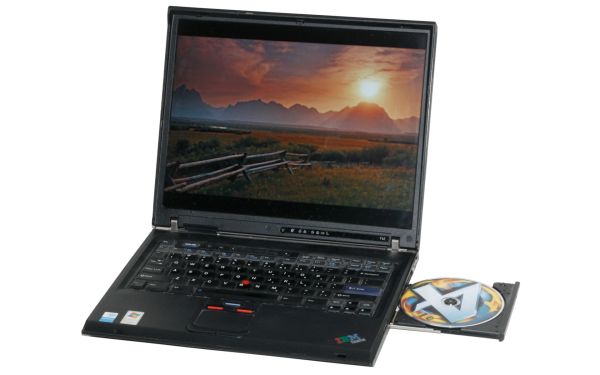














98 Comments
View All Comments
HilbertSpace - Tuesday, December 7, 2010 - link
How many of these IBM laptops would have been purchased by some big company's IT department for their employees? The deciding factor there would be cost, rather than quality...Maybe the option should be in the consumer space. That could be one reason for Apple selling a lot of MacBooks, is that the hardware is quite nice (aside from the glossy screens). Although personally, I think people have used computers for so long they're just looking for a change of scenery (OS X vs. windows), and in a few years, things will swing in another direction.
Meaker10 - Wednesday, December 8, 2010 - link
Yes, and a smart company would see that good quality, sturdy machines mean:Less breakages.
Less downtime.
Better productivity.
sgtwiltan - Tuesday, December 14, 2010 - link
Way more than the joe schmoes have bought in the Consumer space to the tune of tens of thousands up to hundreds of thousands which now out of warranty are getting extra love from second hand consumers who get bargain quality products.Part of the idea for screens viewable only to the one using it was an important due to privacy and company confidential information. It's the consumers who have basically been perpetuating the virus laden world who care about being able to show what they are looking at who have made the industry go to the widely visible LCDs and not the working stiffs who need to only do work.
Don't believe the consumer market drives development for mass deployed systems. Reliability and standardization are what companies want and need.
Souka - Tuesday, December 7, 2010 - link
I have that exact laptop sitting on my desk with a minor upgrade(s)120GB 7200rpm Hitachi drive as primary
100GB 7200rpm Hitachi drive as secondard (in place of the DVD burner)
I thought about putting Win7 on it, but it runs just fine with XP and the extended battery (with hundreds of cycle counts) still gets about 4+hrs surfing the web, or 2.5hrs watching a DVD
Excellent laptop.... I really miss the days.... Had a T61 for awhile, but didn't quite feel as solid.
Would really get a kick out of a performance review! (use LCD and external LCD to compare framerates! :)
My $.02
lbeyak - Tuesday, December 7, 2010 - link
I'm still using a Dell Inspiron 6000 that was bought for me (for university) about 5 years ago. It still works great for regular Windows stuff (running Windows XP), and olderish games (has a ATI Mobility X300 128 MB video card upgrade).Only thing wrong with it is the optical drive has all but died, and the screen might have a few tiny darker spots in some places.
Regarding better displays, YES PLEASE!
I am also a huge supporter of quality displays, and would love to see a wider variety of displays available for mainstream products (even if it is more expensive!).
Note to LCD manufacturers: GIVE ME AN LCD BONER!
tomoyo - Tuesday, December 7, 2010 - link
I 110% care about lcd display quality. Because it's one of the few areas where I can definitely say we've completely REGRESSED. Cpus get faster and cheaper, video cards also, storage as well. LCDS HAVE GOTTEN WORSE. And honestly not that much cheaper. I bought my MVA dell 19" display many years ago for $210. While you can find cheaper ones now, they're all TN-film and none are nearly as high quality. It's amazing how terrible the innovation for computer lcds is. Even big screen tv lcds have gotten far cheaper and better. Now we have "240hz" led tvs for under $1000 or "600hz" plasmas. Meanwhile we have only a trickle of 120hz tn-film lcds for computer displays and NO ips/mva/pva/etc 120hz displays at all. Meanwhile somehow tvs can do 120hz without resorting to tn-film. I seriously hate the lcd market so much right now.velis - Wednesday, December 8, 2010 - link
+ 1And to go a bit further: I also hate sites like Anandtech for it. They are our mouthpieces, but remain silent just passively reviewing crap mfgs are putting out.
****************************************************************************************
Come on Anand, Brian et company, get vocal on our behalf. Your forums are full of posts about how crap todays monitors are yet you remain silent.
****************************************************************************************
While people that would be willing to spend dope on 3840x2400 displays are rare, they exist and so do people that would spend on 120Hz or on IPS or ....
Manufacturers should be made aware of this. They should begin to realize that having a super über monitor on sale boosts their crap line sales because the forums would be full of OMG they have THAT 1337 monitor on sale!!! Not to mention all the happy geeks with parents too rich that would get to enjoy these monitors. And finally the average techie Joe who would finally be able to get a not_so_high_end monitor from this manufacturer, but still sufficient and worthy of the name "monitor".
velis - Wednesday, December 8, 2010 - link
Dam, don't know why I keep confusing Brian with Jarred :( Sorry Jarred, my apologies.QChronoD - Wednesday, December 8, 2010 - link
I totally agree that the monitor makes a HUGE difference in how enjoyable it can be to use your computer for long periods.Last xmas I upgraded my 5y/o 19" generic LCDs for a pair of Dell U2410s. OMG the picture is a million* times better. There were cheaper 24" monitors out there, but they were all TN panels and these are IPS (and matte).
I'm looking to replace my old laptop soon and about 80% of my decision is going to be based on the reviews of the screen and the overall build quality. Even the slowest i3 or AthlonII are plenty fast for anything I'd be doing on it, so performance reviews don't really matter much (I'd rather get a cheap CPU and upgrade to a SSD)
Keep up the good work on the reviews!!!
yzkbug - Tuesday, December 7, 2010 - link
OMG! Thanks for this article. Also, notice how thin the screen bezel on his dinosaur. Every notebook manufacture should read this. I would be glad to pay extra for a good quality non-glassy screen and a thin bezel. As matter of fact, I have been postponing buying a new notebook several times already only because of this.